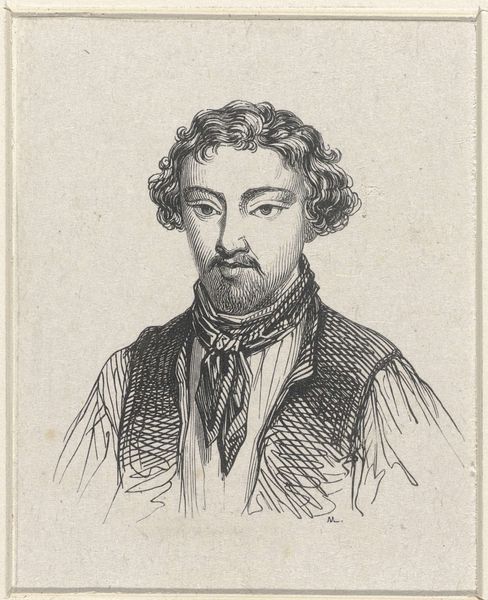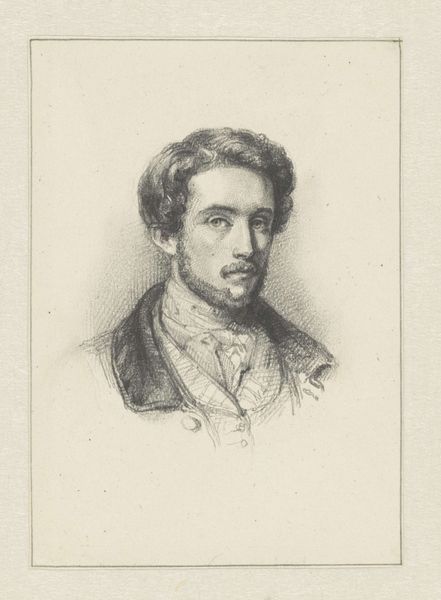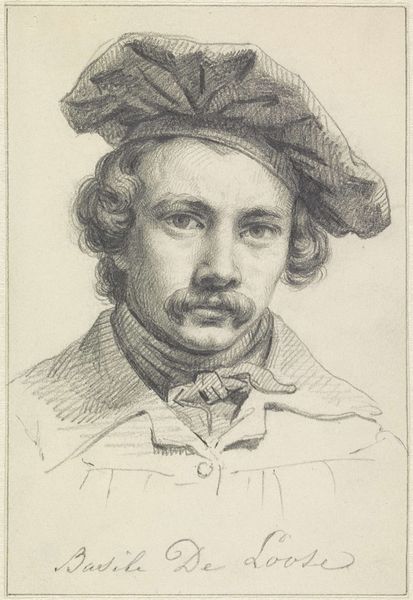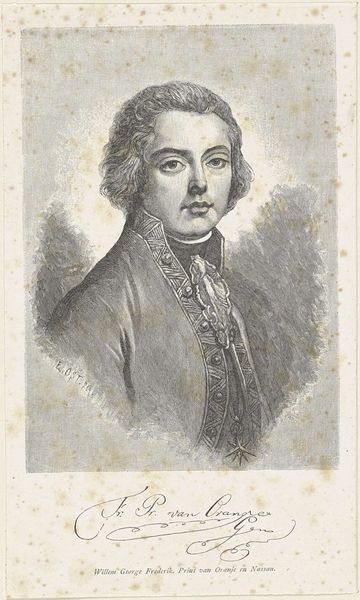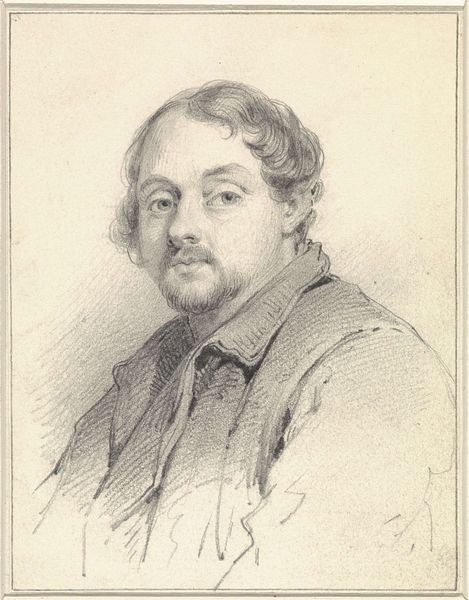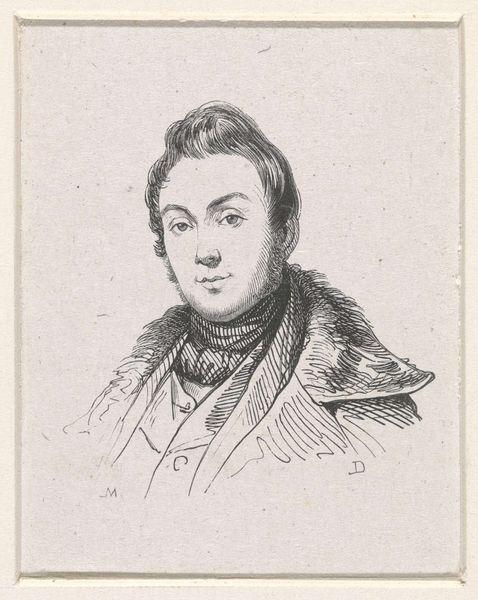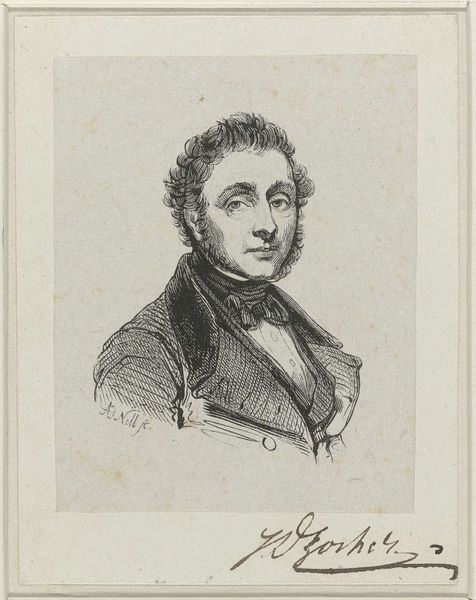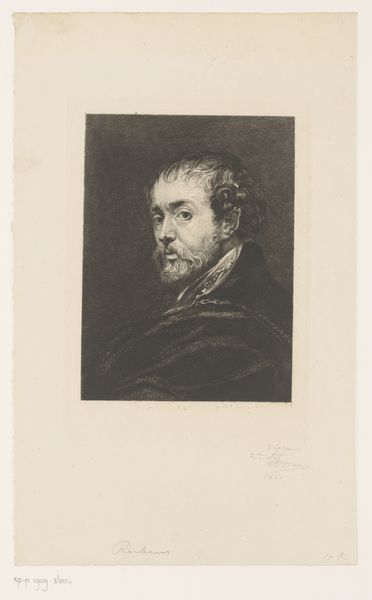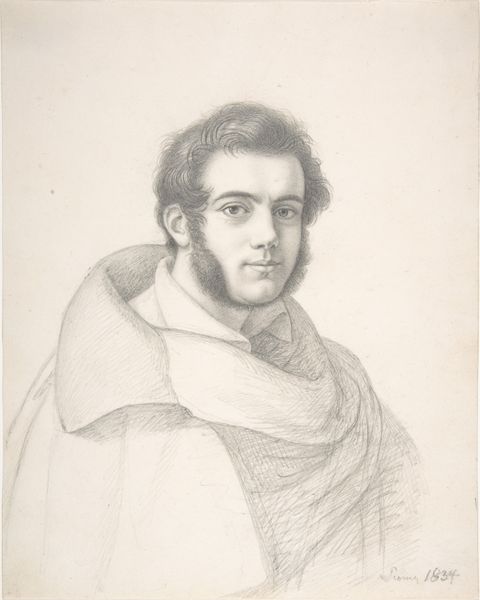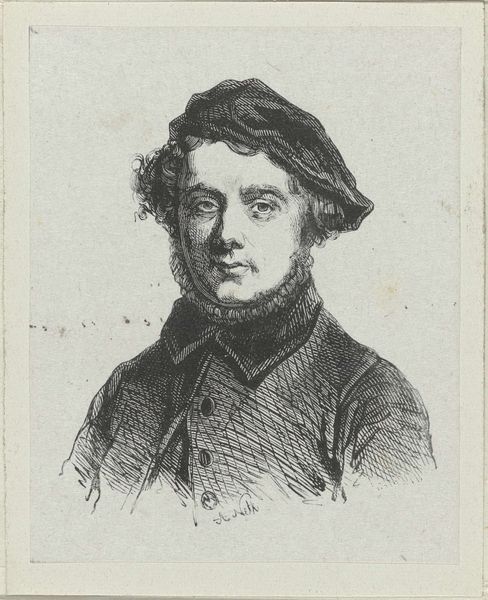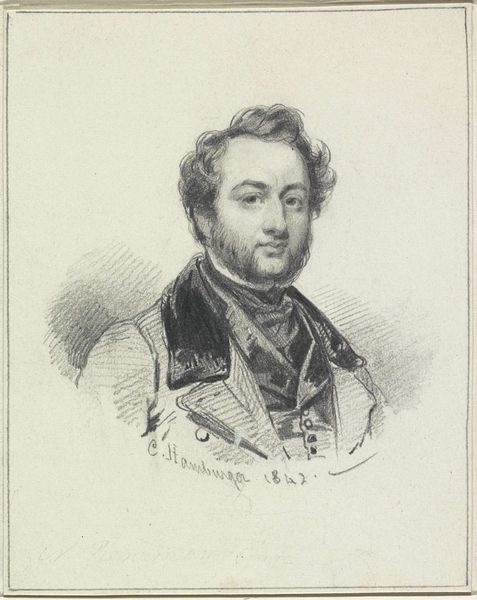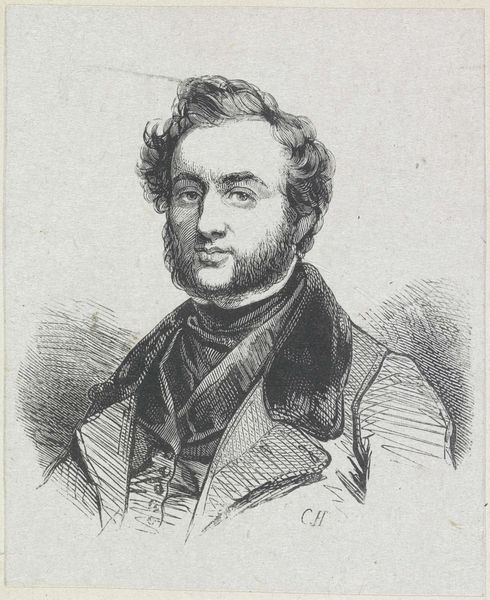
drawing, pencil
#
portrait
#
drawing
#
self-portrait
#
pencil sketch
#
romanticism
#
pencil
#
academic-art
Dimensions: height 186 mm, width 140 mm
Copyright: Rijks Museum: Open Domain
Curator: Here we have Eugène François de Block’s self-portrait, a pencil drawing crafted sometime between 1832 and 1842, now residing at the Rijksmuseum. Editor: My first impression is that it's surprisingly intimate. The soft lines of the pencil sketch, the way he looks directly at us... there's a vulnerability that’s captivating. Curator: Absolutely. The artist employs the medium with a certain finesse that links back to his academic training. Note how the cross-hatching not only suggests volume but contributes to the contemplative mood. This approach to form through shadow evokes a depth beyond mere likeness. Editor: I find it compelling to consider self-portraits in relation to social roles. How does de Block negotiate his identity, given his time? The gaze could be interpreted as confident or challenging, pushing back against the conventions or perhaps subtly upholding them. It seems calculated to spark introspection for both the artist and the viewer. Curator: True, his choice of dress - the scarf loosely tied - avoids the severe formality you'd expect. He uses clothing more symbolically, perhaps indicative of the inner life, an inclination of Romanticism, or it is signaling the image of an artist, setting himself apart. These little gestures, both compositional and costumic, provide symbolic texture, informing our deeper reading of identity. Editor: Exactly, and within the timeframe of its creation, between the 1830s and 40s, Europe was grappling with evolving social structures and new notions of the individual. The image makes me wonder about his stance on social justice or reform. Is his ‘artist’s attire’ perhaps subtly aligning him with movements pushing against rigid societal norms? Curator: Such symbols create layers of significance. What he chooses to show—or conceal—becomes part of a calculated self-fashioning, reflective of self-awareness. And how each person sees their world... I can almost see a trace of melancholy around the eyes. Editor: Seeing it this way, a visual artifact shaped by the tides of history and by choices related to gender, status, and, maybe, the desire to fit in but also break free—that’s fascinating! Curator: Indeed, delving into the visual narratives opens new ways of interpreting our shared cultural experiences through art. Editor: Absolutely! It allows us to contemplate not just what he shows us but also how art captures moments of profound personal and societal transition.
Comments
No comments
Be the first to comment and join the conversation on the ultimate creative platform.
